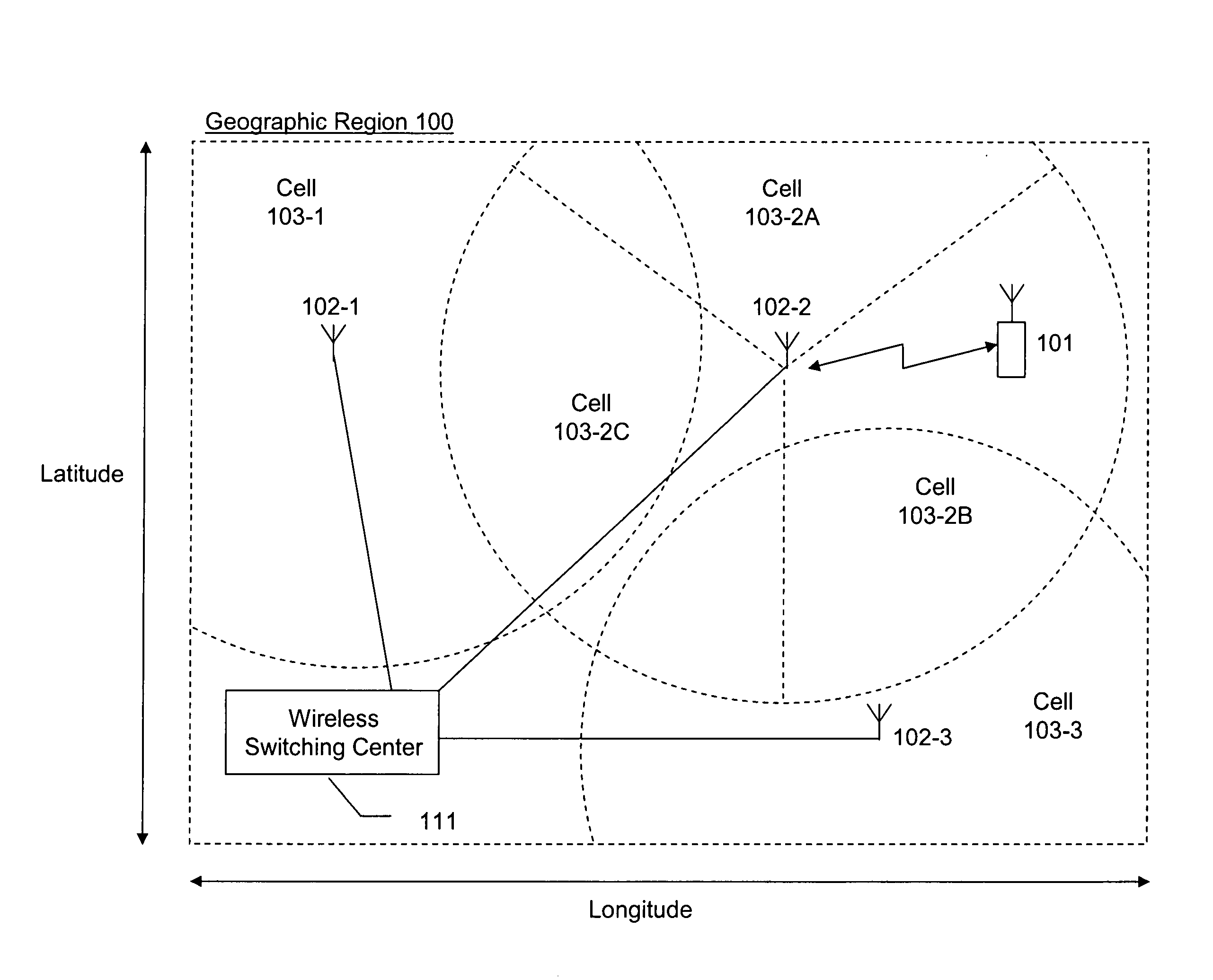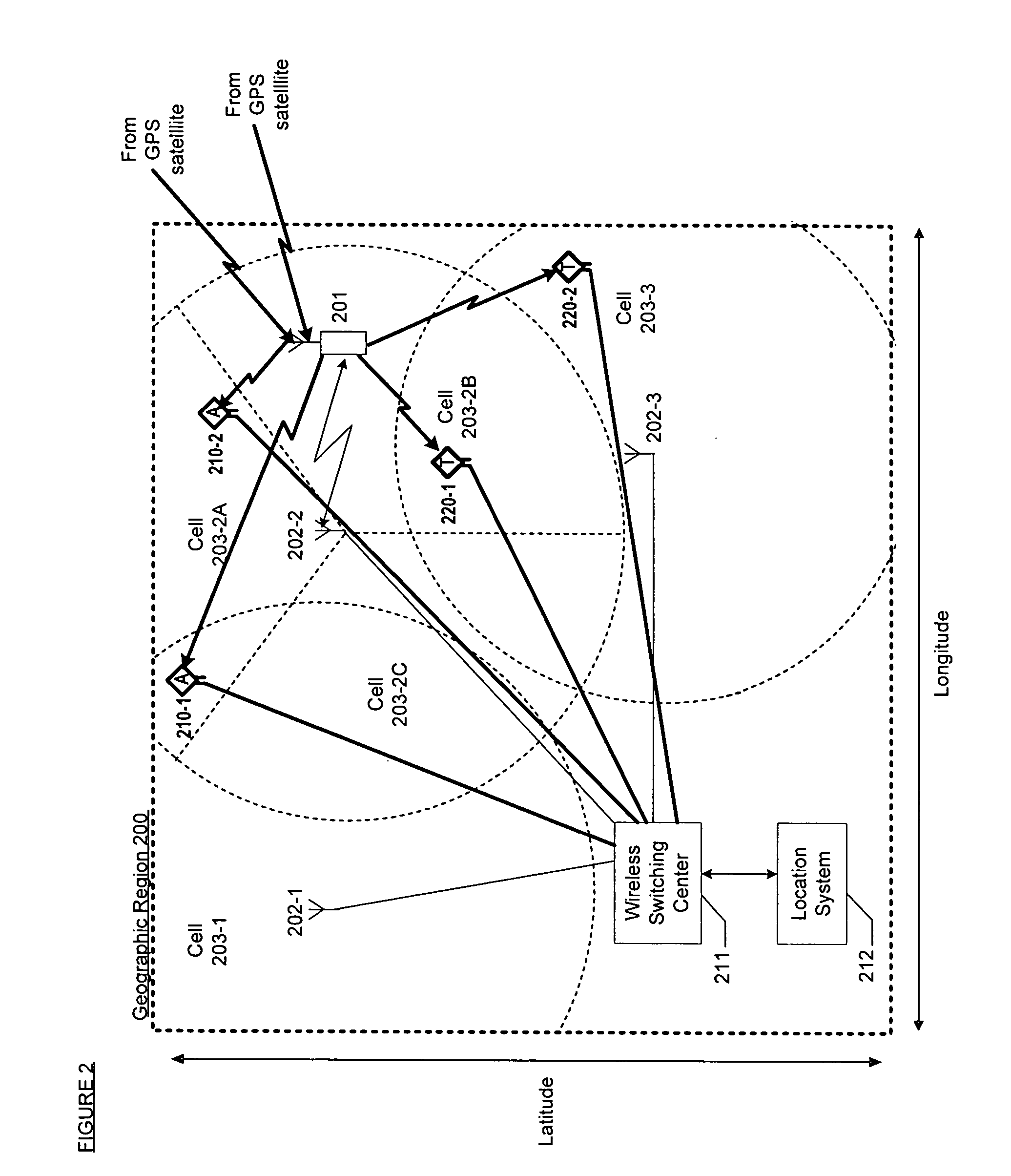Location estimation of wireless terminals based on combinations of signal strength measurements and geometry-of-arrival measurements
- Summary
- Abstract
- Description
- Claims
- Application Information
AI Technical Summary
Benefits of technology
Problems solved by technology
Method used
Image
Examples
Embodiment Construction
[0044]FIG. 1 depicts the elements of a wireless telecommunications system that provides wireless telecommunications service to wireless terminals (e.g., wireless terminal 101, etc.) within geographic region 100. The hub of the telecommunications system is wireless switching center 111, which might also be known as a mobile switching center (“MSC”) or a mobile telephone switching office (“MTSO”).
[0045]Typically, wireless switching center 111 is connected to a plurality of base stations (e.g., base stations 102-1, 102-2, and 102-3 ), which are dispersed throughout the geographic area serviced by the system. Each base station has one or more cells (e.g., cells 103-1, 103-2A, 103-2B, 103-2C, and 103-3 ) each corresponding to a specific antenna and serving a specific portion of the geographic region 100. As shown in FIG. 1, a cell may be omni-directional (e.g., 103-1 and 103-3 ) or may be limited to a specific angular sector (e.g., 103-2A, 103-2B, and 103-2C). It is well known that opera...
PUM
 Login to View More
Login to View More Abstract
Description
Claims
Application Information
 Login to View More
Login to View More - R&D
- Intellectual Property
- Life Sciences
- Materials
- Tech Scout
- Unparalleled Data Quality
- Higher Quality Content
- 60% Fewer Hallucinations
Browse by: Latest US Patents, China's latest patents, Technical Efficacy Thesaurus, Application Domain, Technology Topic, Popular Technical Reports.
© 2025 PatSnap. All rights reserved.Legal|Privacy policy|Modern Slavery Act Transparency Statement|Sitemap|About US| Contact US: help@patsnap.com



